Explore Wilderness: Your Complete Guide to Adventure and Discovery
This guide covers everything you need to safely explore wilderness — from easy day hikes to multi-week backcountry adventures in places so remote your phone becomes a fancy paperweight (and honestly, that’s kind of the point).
Key Takeaways
- Wilderness exploration has something for everyone — whether you’re up for a chill day hike or a multi-week expedition that’ll push every limit you didn’t know you had
- Preparation isn’t optional — route planning, weather checks, the right gear, and telling someone where you’re going can literally save your life
- Amazing destinations are everywhere — from Yellowstone’s geysers to Alaska’s remote backcountry, there’s a perfect spot waiting for your skill level
- Navigation is part art, part science — blending old-school map skills with GPS tech keeps you on track when things get confusing
- Leave No Trace actually matters — these principles are what keep wilderness areas stunning instead of looking like a landfill
Wilderness areas cover less than 20% of the planet, but they pack in more adventure than you could fit into ten lifetimes. If you’re lying in bed daydreaming about your first backpacking trip — or secretly planning an Alaska wilderness exploration while pretending to pay attention in that boring meeting — you’re already halfway there. Getting out into wild places has this way of completely resetting how you see things. It changes your relationship with nature, and honestly, with yourself too.
What makes a great wilderness trip? It’s not being the toughest person out there or buying gear that screams “Everest.” It’s showing up prepared, staying humble, and remembering nature doesn’t care about your plans—or your Instagram. When that little voice says “this might be too much,” listen to it, respect it, and don’t let it drive.
Real talk: every year, search and rescue pulls people out who thought, “How hard could it be?” I watched it happen once at a trailhead. A guy showed up in flip-flops—actual flip-flops—and his friends begged him to put on real shoes. He laughed. “I’ll be fine.”
Twenty minutes later, he was hobbling back with bloody feet, staring at the ground like it betrayed him. His friends didn’t say a word. They didn’t need to. You could practically hear the “we told you” hanging in the air.
The lesson? Good wilderness trips and total disasters come down to one thing: preparation. Not how tough you are. Not how expensive your gear is. Just solid planning and a healthy dose of common sense. Start with simple day hikes, learn as you go, and work your way up to bigger wilderness adventures without becoming the cautionary tale people tell around campfires.
Types of Wilderness Exploration
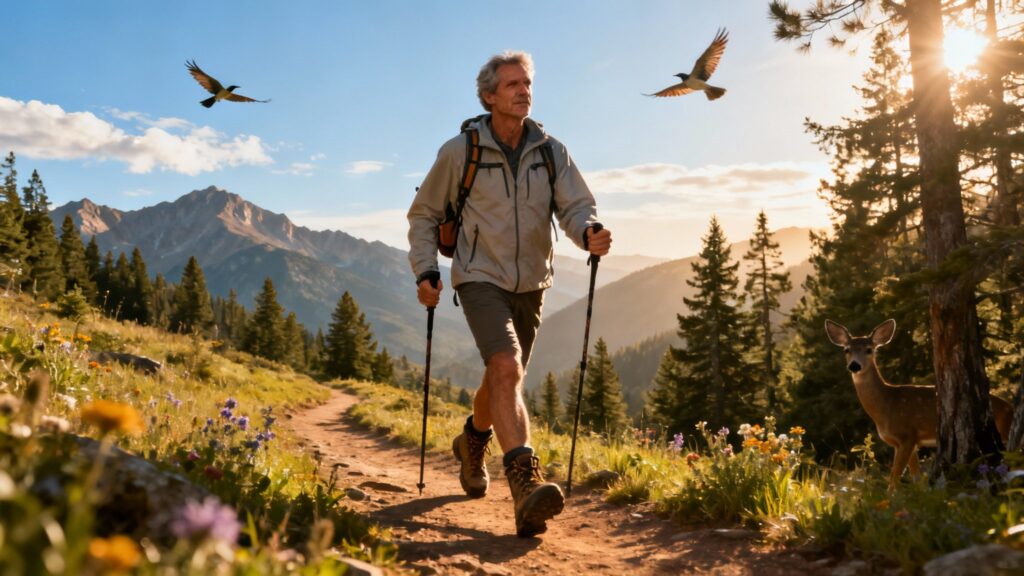
Day Hiking and Backpacking
Day hiking on marked trails is like wilderness exploration with training wheels — and there’s absolutely nothing wrong with that. National and state parks make it easy to get into real nature without getting too far from help. You don’t need much gear—if you’re able to walk for a couple of hours, then you’re good.
Explore parks like Yellowstone and Yosemite because you might enjoy the miles of trails they have. Some trails are easier, you can even hike with your eyes close, but I’m kidding. But both are worth it. Both are valid experiences.
When most people picture a wilderness adventure, they’re imagining a backpacking expedition — anywhere from 2 to 30 days out there — with someone standing on a windy peak looking inspired and slightly unwashed. That’s the vibe, and honestly? Pretty accurate.
Your first multi-day trip is always an education. I’ll never forget mine — I packed like I was permanently relocating to live with Tarzan in the jungle. Full-size bottle of Dr. Bronner’s soap (because apparently I thought I’d be doing laundry out there?), three pairs of extra socks, a book I never opened, even a camp chair that weighed like five pounds. My pack weighed close to 50 pounds. Thomas, my hiking buddy who’d been doing this for years, just gave me this knowing smile and said, “You’ll figure it out.”
He was so right. Before the end of the trip, I was already listing the what to bring and what to leave behind on my next adventure.
But standing at that alpine lake on day three, watching the sunset paint the mountains in shades of orange and pink while a deer casually wandered past our camp like we weren’t even there? That’s when I got it. That’s when I understood why people become completely obsessed with this stuff. It’s not just about the views — though those help — it’s about feeling genuinely connected to something bigger than yourself.
Specialized Adventures
Off-trail exploration is for people who see a perfectly good marked trail and immediately wonder what’s beyond it. Fair warning: this isn’t beginner territory. You need solid navigation skills and the ability to read landscape like you’re reading a story. You’ll discover places most people will never see, but you’d better respect the environment and know your limits. The wilderness doesn’t grade on a curve.
My buddy spotted a tiny blue dot on the map—a remote lake—and decided to bushwhack straight to it. On paper: an easy two miles. In reality, it was six hours of fighting through shoulder-high brush, scrambling over downed trees, and slogging through a swamp that definitely wasn’t on the map. He made it eventually. The lake was glass-clear and untouched—the kind of place that feels secret, almost sacred.
The mosquitoes? They swarmed him like he owed them money. When he staggered back to the trail, he was so covered in bites he looked contagious. I barely recognized him. “Totally worth it,” he said later, scratching like crazy and trying to talk me into going next time. I’m… not sold. I like my blood where it is.
Water trips hit differently. In a canoe or kayak, the world slows down. In the Boundary Waters, you’re not just paddling—you’re following routes people have used for thousands of years. Day one, your shoulders are already filing complaints. But then dawn shows up calm and glassy, and you slide past a moose so quietly you can hear the drip from your paddle. In those moments, every ache is worth it. You feel stitched into the place in a way walking never quite gives you.
Winter doesn’t kill the fun—it just swaps the playlist. I get into snowshoeing, a little cross-country skiing, and every now and then, winter camping when I’m feeling bold. People always ask if I freeze. Honestly? With the right layers and a simple setup, it’s shockingly comfortable.
Sure, you’ll catch a chill here and there—fingers, toes, the tip of your nose—but it’s the kind you can manage with a hot drink and a quick tweak, not the “uh-oh, this was a mistake” kind. And when the world goes quiet under fresh snow, it feels like you’ve got it all to yourself. Laying first tracks on fresh snow and hearing that deep, winter quiet? It feels almost sacred. Even your thoughts sound loud. Even your thoughts seem loud.
Desert exploration in places like Utah’s canyon country demands completely different skills than forested environments. Water is everything out there. I learned the hard way on a spring trip when I underestimated and spent the hottest hours rationing my last liter. Cracked lips, pounding head, and a whole hike of doing math on how many sips per mile I could afford. Every sip felt like a big decision. Now I carry at least a liter more than I think I’ll need. I’ve never regretted the extra weight. Heavy pack beats dehydration every time.
Essential Planning and Preparation
Successful wilderness exploration starts months before you actually hit the trail. Too many people show up unprepared, and it never, ever ends well. I’ve seen it happen more times than I can count.
Research regulations and permits first. Nothing’s worse than driving six hours to a trailhead only to discover you needed a permit that sold out three months ago. Trust me on this — I’ve lived that nightmare, and sitting in a parking lot staring at a “Permit Required Beyond This Point” sign while your friends try really hard not to say “I told you so” is not how you want to kick off your weekend. The drive home is very, very quiet.
- Check the forecast—and prep for worse. Mountain weather flips fast. I’ve seen bluebird mornings turn into hailstorms in minutes. In the Rockies once, a wall of clouds rolled in like a movie effect; ten minutes later we were in full rain gear, huddled under a tarp while marble-sized hail pinged off the ground. Plan for temps 10–20°F colder than predicted, and always pack rain gear. Weather apps lie. Nature doesn’t.
- Set realistic daily miles. On paper I planned 15-mile days; on trail with a 35 lb pack and 2,000 ft of gain, I barely managed 8. Most backpackers average 2–3 mph on moderate terrain—less with heavy loads or tough routes. Be honest about your fitness. Your ego might pout; your body will be grateful.
- Share your trip plan. File it with a ranger or text a trusted contact your route and return time. I send my full itinerary to my brother—if he doesn’t hear from me by the check-in time, he knows to act. It’s not paranoid; it’s smart.
- Train like you’ll hike. Start 6–8 weeks out, steadily adding distance and pack weight. Do practice hikes in the exact boots and pack you’ll use. Finding gear issues miles from help is a special kind of misery.Your body needs to know what you’re asking it to do before you’re actually out there depending on it.
Test all your gear at home before heading into places where equipment failure could mean serious problems. I once found out my “waterproof” tent leaked like a sieve during the first rain of a week-long trip. I spent the whole night with water pooling under my sleeping pad, using my rain jacket as a bonus tarp, and questioning every gear choice I’d ever made. Now I test everything in my backyard first—much to my neighbors’ amusement. They think I’m weird. They’re probably right. But I’m dry when it rains, so who’s winning?
Critical Gear and Equipment
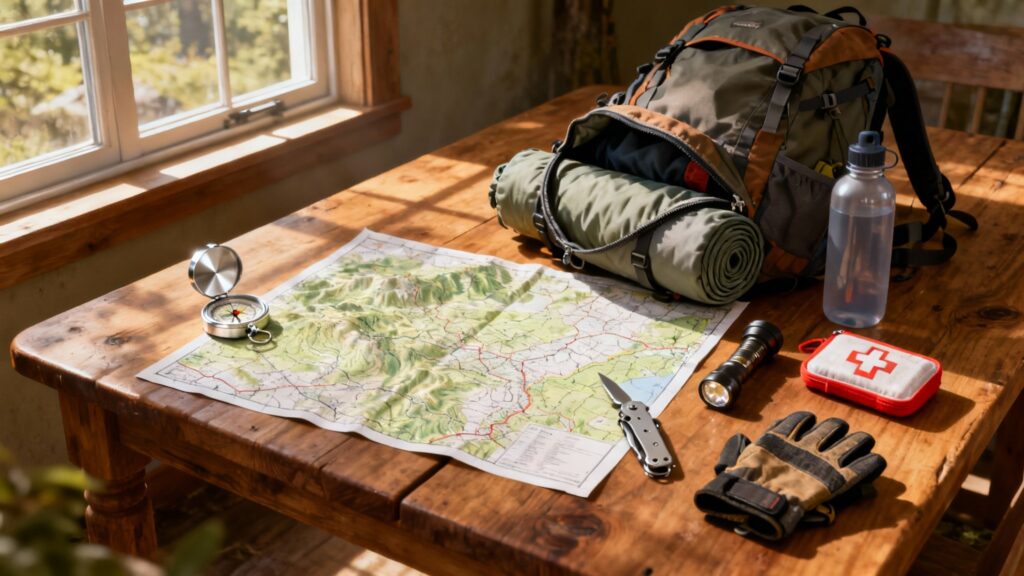
Navigation and Safety
Reliable navigation equipment isn’t optional — it’s literally the backbone of safe wilderness travel. You can skimp on a lot of things, but not this.
Topographic maps in waterproof cases remain essential even in our GPS-everything world. Paper maps don’t need batteries, won’t shatter when you drop them (and you will drop them), and give you that big-picture view that small screens just can’t match. I always carry paper maps because I’ve had GPS units die at the absolute worst possible moments — like the time my battery drained overnight in cold weather, leaving me with a useless electronic brick right at the start of a challenging navigation day. Not ideal. Actually, pretty terrible.
A quality compass and GPS with extra batteries give you complementary navigation capabilities. GPS units are fantastic at pinpointing exactly where you are, while compasses provide reliable direction in all conditions without needing satellite signals or battery life. Carry spare batteries in waterproof containers — cold weather drains them way faster than you’d expect. Like, shockingly fast.
Emergency communication devices like satellite messengers can summon help from literally anywhere when cell coverage vanishes into thin air. A few years back, my hiking partner twisted her ankle pretty badly five miles from the trailhead. We didn’t actually need rescue — she could hobble out slowly — but just knowing I could call for help if things got worse provided this incredible peace of mind. We took our time, she made it out fine, but having that device gave us real options instead of just hope and prayer.
Wilderness first aid kits address injuries when the nearest hospital is days away on foot. These kits handle everything from annoying blisters to nasty cuts from slipping on wet rocks. I’ve used mine more times than I can count — for myself and for random hikers I’ve run into on the trail.
One time I helped this guy who’d sliced his hand open pretty good on a sharp rock. He had nothing but a couple of sad band-aids that looked like they’d been in his pack since 2003. After cleaning and properly bandaging his wound, he looked so relieved I thought he might actually hug me. Take a wilderness first aid course — it’s honestly one of the best investments any outdoor enthusiast can make. You’ll use those skills. I promise.
Clothing and Sleep Systems
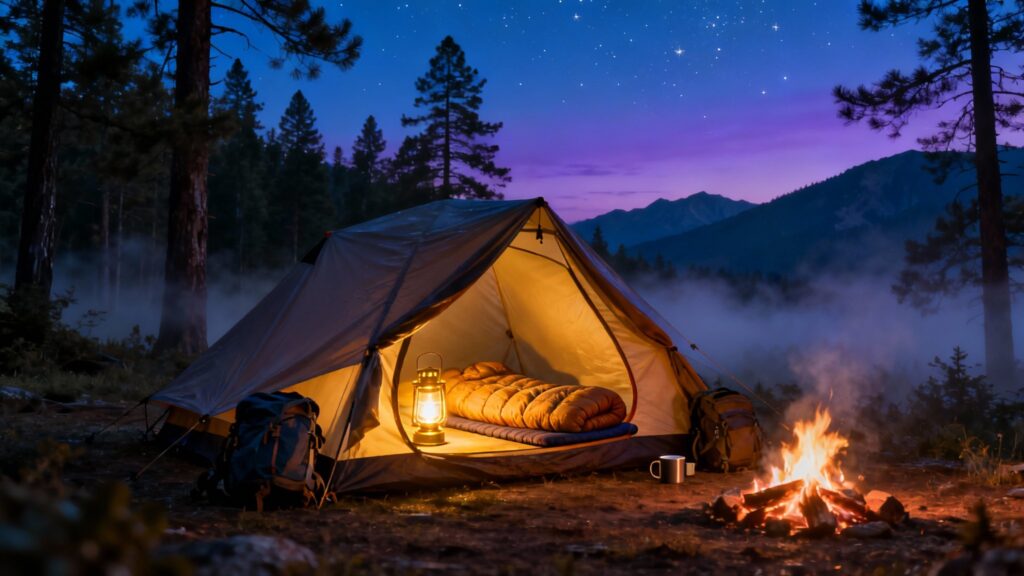
Layer up, starting with a moisture-wicking base. “Cotton kills” isn’t just a scare line—it’s real. I once wore a cotton tee on a rainy hike and shivered for hours, even while moving. A friend handed me a synthetic shirt and the difference was instant—night and day. Go with merino or synthetics that still insulate when damp. Your body will thank you.
Wear real hiking boots—and break them in before the trip. New boots on a multi-day hike are blister factories. I learned the hard way on my first backpacking trip and spent day two waddling like a penguin. Do a few shorter hikes first. Your feet may not send thank-you notes, but they’ll stop sending hate mail.
For sleep, pick a bag rated 10–15°F colder than the forecast low. Bag ratings are optimistic—wildly so. If it’s calling for 40°F, I want a 25–30°F bag. Down is light and warm but useless when soaked; synthetics handle moisture better. Choose based on your conditions.
Premier Wilderness Destinations
North American Highlights
Boundary Waters Canoe Area (Minnesota)
Think a million-plus acres of lakes linked by short carry trails. No motors allowed, so it’s actually quiet—like hearing fish jump and loons call at dusk kind of quiet. I spent a week there one summer, and the nighttime silence felt almost loud. No cars, no planes—just our voices and the campfire. It was incredible. Honestly, life-changing.
Bob Marshall Wilderness (Montana)
“The Bob” is huge—about 1.5 million acres of Rockies with trails to alpine lakes, glacier-carved valleys, and big peaks. It’s great for beginners and for folks chasing real challenges. The scale humbles you. You can hike for days without seeing another person. Just you, the mountains, and your thoughts—in the best way.
Olympic National Park (Washington)
Nearly a million acres of temperate rainforest, high meadows, and wild coast. It gets a ton of rain—over 140 inches a year—so everything is impossibly green. Even in “dry” spells, expect showers. The mossy trees feel straight out of a fairy tale. The first time I went, I half expected hobbits to wander out of the forest.
Navigation and Safety
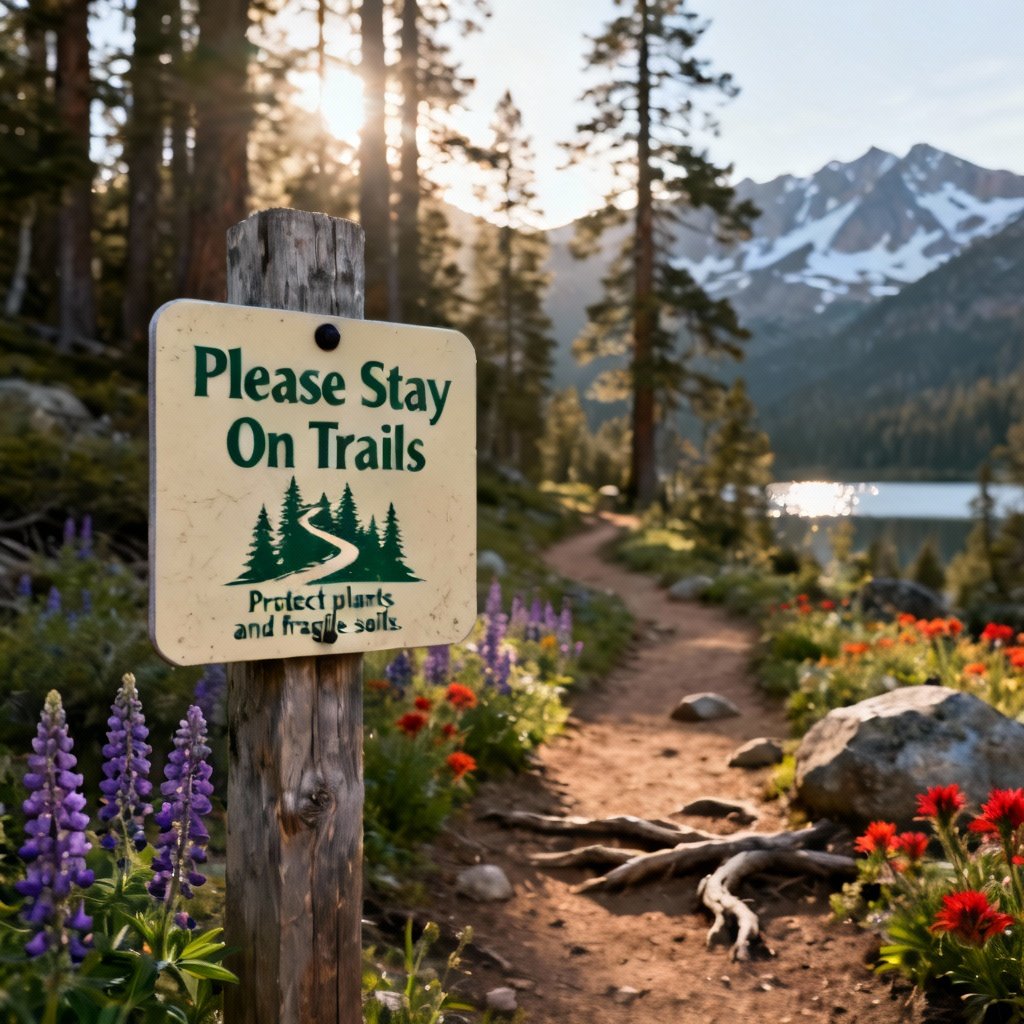
Learn the basics of map and compass—bearings, triangulation, the works. These skills fade if you don’t use them. I practice because once, fog rolled in on a “familiar” route and suddenly every tree looked the same. The map and compass got me back, but it was a good reminder: confidence is helpful; overconfidence gets you lost.
Know the big hazards: hypothermia, dehydration, and altitude sickness. Hypothermia can creep in even when it’s around 50°F if you’re wet, windy, and worn out. I’ve seen people shivering hard in “not that cold” weather just because they were soaked and exhausted. It’s no joke. Altitude sickness above 10,000 feet brings headaches and nausea that are absolutely no joke — I experienced it once and felt like I had the worst hangover of my entire life, except I hadn’t had any of the fun the night before. Just the misery. All the misery, none of the party.
Know when to turn back. This is honestly the hardest lesson to learn, and I’m still working on it. I’ve turned around within sight of summits because the weather deteriorated or someone in our group wasn’t feeling well. It stings in the moment — it really does — but the wilderness will always be there for another attempt. You only get one life. No summit is worth dying for, no matter how close you are or how much effort you’ve already put in. The mountain doesn’t care about your ego.
Environmental Responsibility
Wilderness areas are getting more crowded and more impacted every year, which makes Leave No Trace principles more important than ever. Pack out absolutely everything you bring in, including food scraps and toilet paper. Yes, even that. I carry a small trash bag and honestly often end up packing out garbage that other people left behind. It’s frustrating to find trash in beautiful places, but somebody has to do it, right? Might as well be us.
Camp on durable surfaces at least 200 feet from water sources. I’ve seen pristine lakeshores completely trampled by careless campers, and it’s genuinely heartbreaking. Those damaged areas take years to recover, if they ever fully do. We’re guests out there. Act like it.
Use portable stoves instead of building fires whenever possible. Look, campfires are wonderful — I love them as much as the next person — but fire ring scars in fragile alpine areas can last for decades. Decades. My lightweight backpacking stove boils water in three minutes flat without leaving a single trace behind. It’s not as romantic, sure, but it’s the right thing to do.
Respect wildlife by maintaining safe distances and securing your food properly. I once watched a black bear absolutely destroy someone’s improperly stored food at a campsite. The bear ripped through their tent like it was tissue paper, scattered gear everywhere, and ate everything even remotely edible. The campers had to hike out early, and that bear probably had to be relocated because it learned that tents equal food. Use bear canisters or hang your food bags religiously — it protects both you and the wildlife. Everyone wins.
Building Your Skills
Start with guided trips or join outdoor clubs to learn from people who actually know what they’re doing. These groups provide mentorship and social connections that make exploration way more enjoyable and safer, while helping you avoid countless beginner mistakes. I learned more from experienced hikers in my first year than I could’ve possibly learned from a decade of solo trial-and-error and YouTube videos. There’s no substitute for real experience shared by real people.
Gradually increase difficulty as your experience grows. Start with easy day hikes, progress to overnights, then work up to multi-day adventures. Each step builds naturally on previous experience without overwhelming you or creating genuinely dangerous situations. There’s zero shame in starting small — literally everyone does. Even the people posting epic summit photos on Instagram started with a day hike somewhere.
Build physical fitness through regular outdoor activities. Weekend hikes with loaded packs stress your body in completely different ways than gym workouts. Hills, uneven terrain, and varying distances prepare you for real trail conditions way better than any treadmill ever could. Treadmills don’t have rocks that try to trip you or surprise elevation gains that make you question your life choices.
Conclusion
Wilderness exploration offers these genuinely transformative experiences that teach patience, humility, and resilience in ways nothing else really can. Whether you’re planning your very first overnight trip or dreaming big about remote Alaska expeditions, success comes down to careful preparation, environmental respect, and gradual skill development. That’s it. That’s the formula. It’s not complicated, but it does require commitment.
The wilderness doesn’t care about your schedule, your expectations, or your carefully laid plans. It demands humility and respect, but it rewards people who approach it thoughtfully with experiences that last a lifetime. Every single trip teaches you something new — about your gear, about the natural world, and honestly, about yourself. Sometimes those lessons are comfortable. Sometimes they’re not. But they’re always valuable.
Remember that wilderness exploration is really about the journey, not just the destination. Some of my absolute best memories aren’t from reaching summits or completing ambitious routes — they’re from laughing with friends around campfires, watching a family of deer wander through camp at dawn, and feeling that deep sense of accomplishment after finishing challenging trips. These become the stories you’ll share for years, the experiences that shape how you see the world and your place in it.
Start planning your adventure today. The world’s wildest places are out there calling, and answering that call might just change your life in ways you can’t even imagine yet. Just remember to pack extra batteries, break in those boots properly, and tell someone where you’re going.
See you on the trail. I’ll be the one with too many snacks and a slightly too-heavy pack, still figuring it all out one hike at a time.

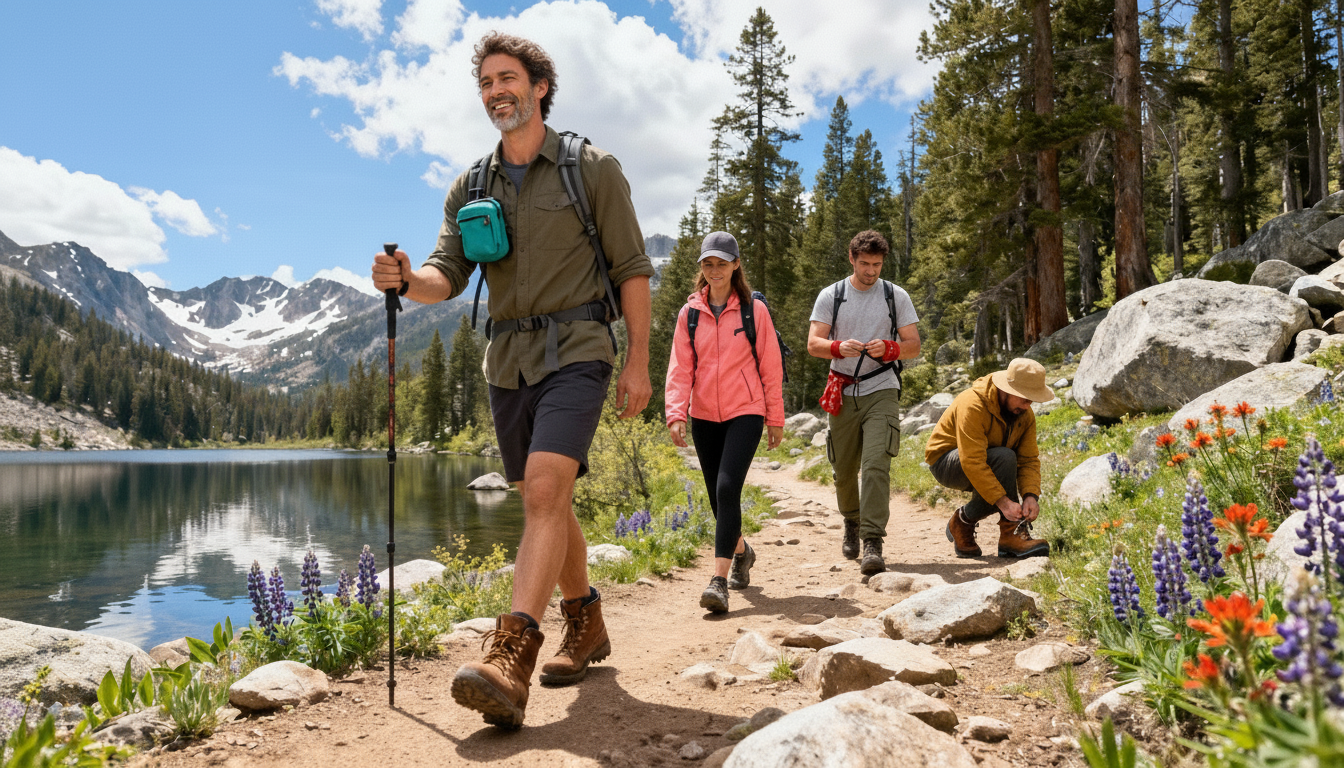
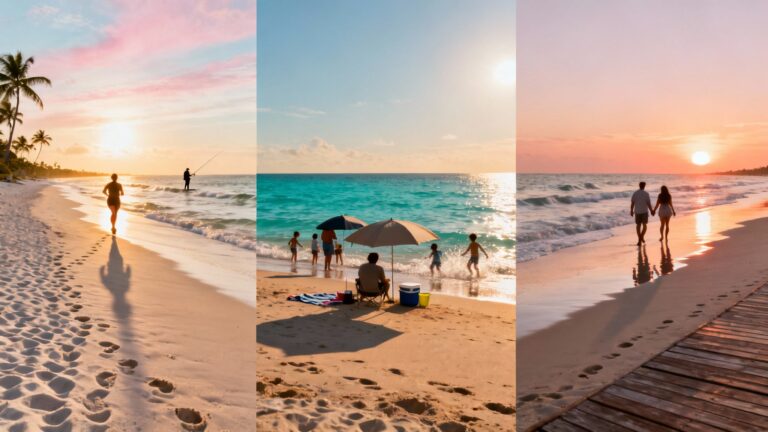

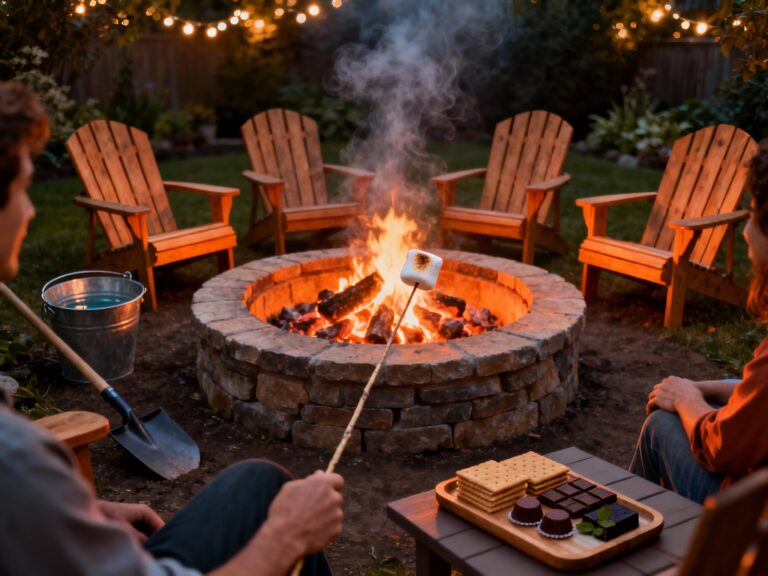
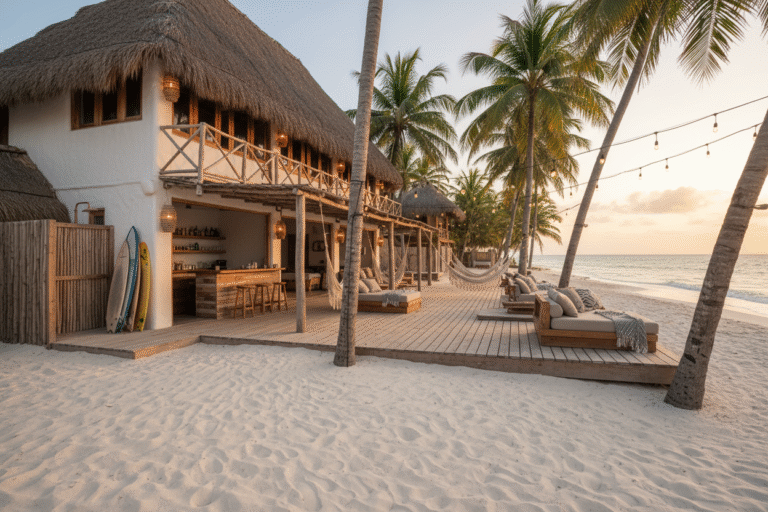
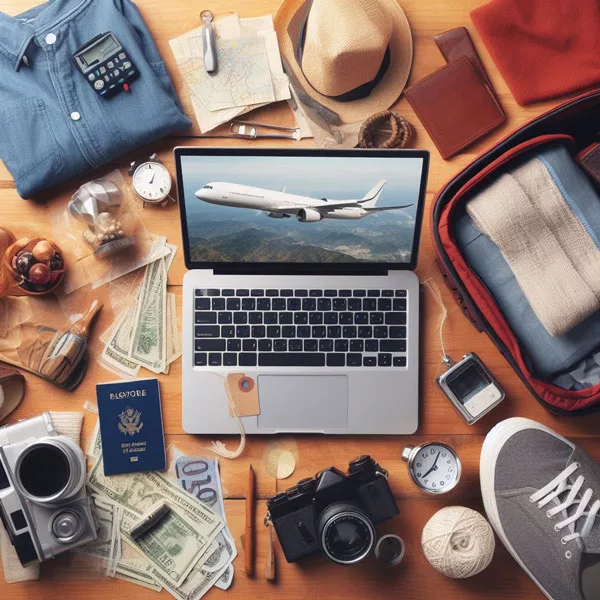

2 Comments
Comments are closed.